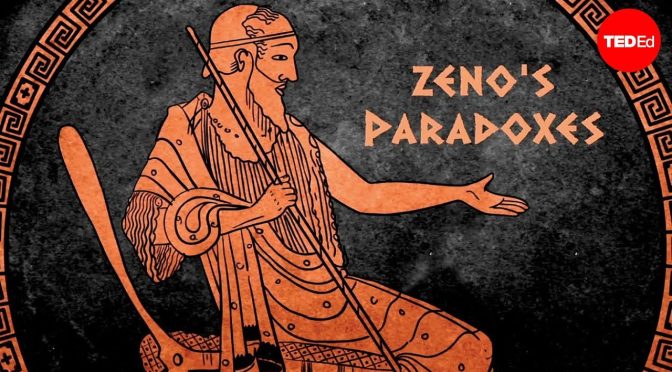This article is based on a video titled “What is Zeno’s Dichotomy Paradox? – Colm Kelleher” by TED-Ed. The video gets into the perplexing world of Zeno’s Dichotomy Paradox, a philosophical conundrum that has puzzled thinkers for over two millennia. The paradox suggests that motion is impossible, a claim that seems absurd yet is backed by seemingly sound logic. Here, we will dissect the paradox and its implications, drawing upon the insights presented in the video.
Contents
- The Genesis of the Paradox
- The Mathematical Perspective
- Resolving the Paradox Through Infinite Series
- The Lasting Impact
- The video
The Genesis of the Paradox
Zeno of Elea, an ancient Greek philosopher, is renowned for his paradoxes that challenge our understanding of concepts like infinity and motion. One of his most famous paradoxes is the Dichotomy Paradox (the term “dichotomy” refers to the act of cutting in two).
The paradox begins with a simple scenario: Zeno decides to walk from his house to the park. To reach the park, he must first cover half the distance, then half of the remaining distance, and so on. Each segment of the journey takes a finite amount of time, yet there are infinitely many such segments. This leads to the question: can Zeno ever reach the park? (It’s fascinating to think that this question, posed thousands of years ago, still challenges our understanding of the world).
The Mathematical Perspective
To understand the paradox better, it can be translated into a mathematical problem. Let’s assume Zeno’s house is one mile away from the park and he walks at a speed of one mile per hour. Common sense dictates that it should take him one hour to reach the park. But according to Zeno’s logic, the journey can be broken down into an infinite series of time segments: half an hour, a quarter of an hour, an eighth of an hour, and so on. Summing these up, one might think the total time should be infinite. This is where the paradox lies.
Resolving the Paradox Through Infinite Series
Mathematicians have found that it is indeed possible to sum an infinite series of finite terms and arrive at a finite answer. The video uses the example of a square with an area of one unit, which is divided into smaller and smaller pieces. Despite the infinite divisions, the total area remains one unit. Similarly, the infinite series representing Zeno’s journey also sums up to one hour, thereby resolving the paradox (and reassuring us that motion is, in fact, possible).
The Lasting Impact
Zeno’s paradoxes, including the Dichotomy Paradox, have had a lasting impact on various fields, from philosophy to mathematics. They force us to confront the limitations of our intuitive understanding and push the boundaries of logical reasoning. While the paradox itself has been resolved, the questions it raises about the nature of infinity and motion continue to stimulate intellectual discourse (and perhaps, will continue to do so for generations to come).

